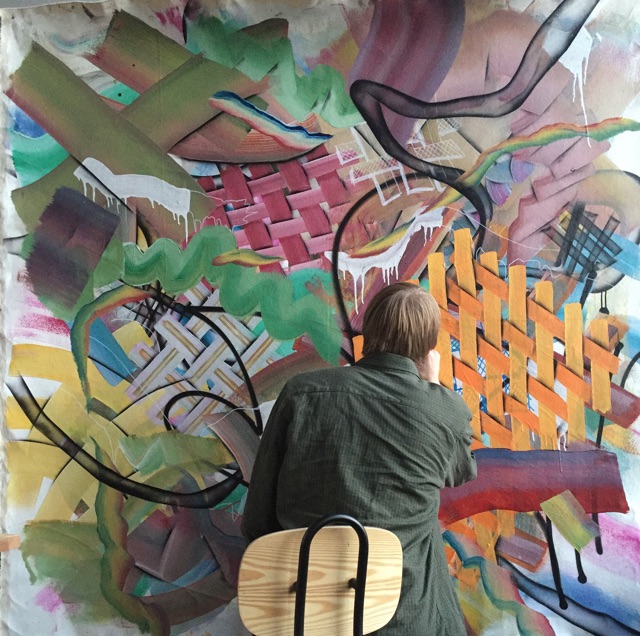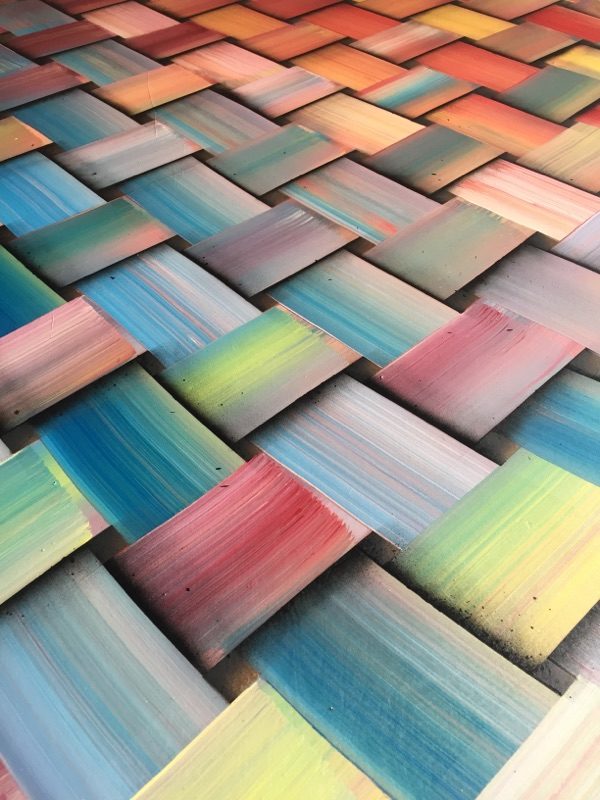
Each day, people observe, admire and take pictures of street art findings in Atlanta’s neighborhoods.
Little Five Points and Krog Street Tunnel are no longer the only places for raw art, with their neighbor Inman Park gaining murals with every new building that appears. Meanwhile, Castleberry Hill, downtown and Edgewood have held their own treasures for decades. Murals have been painted along underpasses in Candler Park, Buckhead and on the entire side of the train bridge in Cabbagetown.
With every mural that pops up, the pressure builds on local artists from the city of Atlanta who are seeking to enforce regulations on property owners over the artwork placed on their buildings.

Free expression?
Back in May, the Atlanta Journal-Constitution (AJC) reported that a group of local artists were suing the city of Atlanta over a discrepancy between public murals and private property.
In accordance with a 35-year-old public art ordinance, the murals in question were said to be illegal because they are publicly displayed without going through a layered approval process conducted by the city’s leisure.
The city continued to note the rigorous system for prospective projects, and the AJC reported that “they must now go through a multi-step application process for art that already exists or face possible prosecution — plus destruction of the art on their own property.”
In June, the AJC said the case was settled in favor of the plaintiffs: Fabian Williams (Occasional Superstar), Benito Ferro (Yoyo Ferro), Peter Ferrari (PLF), and Sister Louisa’s Church of the Living Room owner, Grant Henry. Not only were the murals in question ordered to be left alone, but the ordinance was ruled unconstitutional altogether and the city had to pay $500 in damages to each of the local artists.
For now, it seems as if Atlanta will only gain more art installations and exhibits throughout its streets and neighborhoods. But Daniel Byrd, a student at the Savannah College of Art and Design (SCAD) and Atlanta native, said that now that the fight ended in victory, there’s still a lot to come in terms of public art displays in Atlanta.

How long have you been an artist?
It will be ten years this March. My parents took me to New York in middle school and after my first subway ride, I got a sketchbook. I began with letters and characters, just sort of letting things come into my mind and I just had to get them down onto the page.
How has your art progressed?
With the sketchbooks. Graffiti was something I’d always looked out for and it completely changed the way I looked at the environment made for us [through art]. It made my mindset go from wanting to paint and get recognized to wanting to study the artistic process. All these people going out with different backgrounds putting out their work in the streets, hopefully without riding off anyone else’s style, is dope. Seeing all those styles on one wall is even better because each person’s spin strives to be original and stick out from the rest. That’s what I try to accomplish with my own.
When did you start participating in street art?
I made stickers in middle school and I had a Flickr account. There was a sort of sticker scene on the site where a group of us [artists] sent out stickers and packages all over the world to one another. After middle school, I started going out to drop stickers and eventually started painting. That’s when I met the people who laid down the ins and outs of the street art community. In 2010, I participated in Miami Art Basel which was my first real mural experience. I’ve helped other artists do murals ever since, along with creating my own.
What’s the take on graffiti and murals from the local art community?
There’s a combined opinion, but the sides are very different. The street artists that you see creating the murals you speak of are the ones who are going into the contemporary art world. And they’re killing it — painting as if they had formal art training but in reality, they’re just thinking differently. I’d say people who live in the Eastside and Westside [neighborhoods] are either in favor of it or don’t get involved. However, street art and graffiti is not the same thing. Street art has something behind it, it’s intentional. To me, graffiti is always vandalism because it’s trying to get fame from it.
What’s going on with the murals and the city of Atlanta nowadays?
It goes back to the 80’s and 90’s when Atlanta enacted the Public Art Ordinance (the five-step approval process doctrined by the city). Present day, the city is trying to open it back up because so many private property owners are inviting artists to decorate their buildings. With the ordinance, they’re not trying to sue the artists, but the building owner if they don’t cover up the work when requested. So, it’s like evading the freedom of expression.

If the issue is with private property owners, what say does Atlanta have towards art within/on private property?
Well, right, it doesn’t make sense. The city shouldn’t be able to regulate it through all the steps they want to mandate. The city gets to choose what they want or what looks best, and the artists who get to dominate the scene. It takes away from the diversity and it’s like putting a muzzle on everyone else.
What’s the future for murals in the city, or is it too soon to tell?
Too soon to tell. I think we’re always going to be fighting, or fighting back, but the artists that did win that lawsuit said the city is back onto them. Some other artists are even talking about leaving [the city] because of it. And we need to prevent that. Atlanta is the next meca-art hub.
How does this affect your own work?
It hasn’t yet, but it’s affecting the way I think about the future because I used to do murals, then got into the studio to do a lot of canvas and now I’m getting back onto walls. So, I have to take into account what’s going on.
Is art a form of free speech if speech is defined by expression?
Yeah. Whether it’s good or bad. Bad feelings or not, they can be expressed. No one should be able to stop that from that happening.
